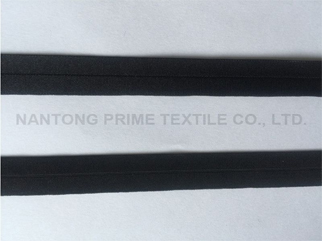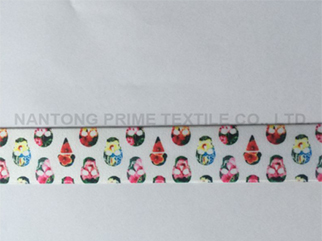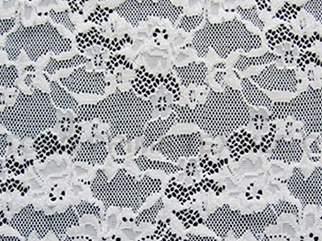What Is Folding Elastic?
Folding elastic is often used to sew the edges of elastic garments such as underwear, swimwear, pajamas, baby clothes, cloth diapers, etc. Because of its stability and wide range of colors, many people also use it as a hairband for babies and children. One side of the elastic is plush, which is comfortable for the skin, and the other side is often more decorative. The feature of the folding elastic is that there is an indentation down the middle, which helps to fold the elastic in half evenly when sewn as a binding.
When can I use it?
Folding elastic is most commonly used in garment production to bind the edges of garments, especially knitwear because the edges of elastic bands can be stretched. This is a clean edge treatment.
The edge width of the garment at the end of the edge of the clothes is reduced (i.e. without losing the fabric seam or folding). If you want to complete an edge with the folding elastic, but your mode requires different edge processing instructions, make sure you trim off the excess fabric before applying your folding elastic. Similarly, if your pattern needs a FOE to complete, but you want to fold your edges under one face or sew on one facing, make sure you add a seam allowance to your pattern.
Some techniques for sewing with fold-over elastic include:
1. Choose the width and finish of the folding elasticity that best suits your project. If you plan to use a foldable elastic as the edge binding, remember that you fold the width in half, which may lose the lovely printing effect.
Delicate underwear tends to look better with narrow FOE, especially if the main fabric is lightweight. Wider elasticity is better for fabric diapers or casual wear waistbands because it is stronger. If you will use FOE as a binding, avoid using FOE decorated with sequins as it may cause a scratch against the skin.
2. If the pattern you use does not require you to use FOE, you may need to eliminate seams on the edges of your clothes. FOE is sewn directly on the raw edges, so the fabric will not be sewn or folded. Check your style to see if seam allowances are already included if you really need them.
3. Sew a fold-over elastic in a flat, such as the leg hole before the side seam. This makes it easier to control and stretch, especially for smaller clothes.
4. You have to make sure that the elastic band of the clothes is elastic. Use three-step zigzag or regular zigzag stitches to sew to your fabric. The three-step zigzag shape helps to eliminate the elasticity of the tunnel.
5. By clamping the edges of the fabric together, the FOE binding can be attached in one step, but keeping the fabric close to the center of the FOE is tricky. For simplicity, first, keep the FOE open and sew the fabric to half of the FOE, which will be inside of the garment.
This means that the right side of your fabric will face up, and the opposite side of your enemy will face up.
After sewing on one side, fold the elastic band to the right side of the fabric. If necessary, use a pin or clip to secure it, or you can use your fingers to gradually fold and pinch the elastic while sewing.
6. When you are sewing, make sure you stop with the needle. This way you can adjust or stretch the FOE without accidentally pulling it out from your feet.
7. Don't be afraid to press your foldable elastic with an iron. Use low calories to help shape your FOE while applying it to curves. After application, a good press can help eliminate any ripples, forcing it to lay flat.
8. If you fix the FOE in a flat when you go to sew your side seams, first fix and paste the seams with a needle to ensure that the elastic edges across the seam.


